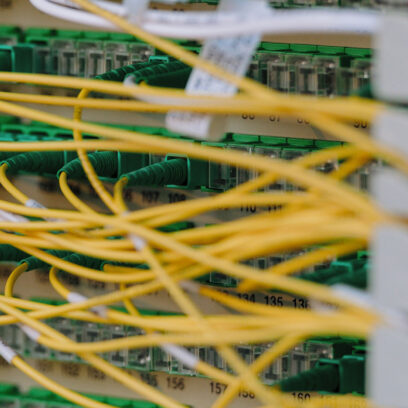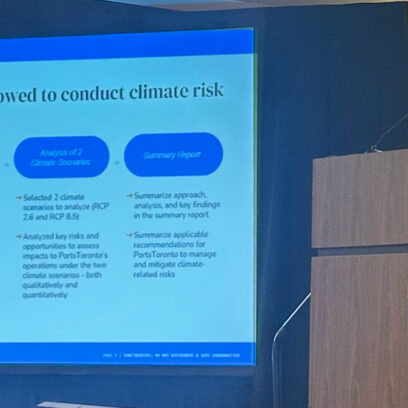Local Law 97: New York City’s Building Emissions Legislation


🌍 Carbon markets can feel overwhelming—fragmented data, limited transparency, and conflicting advice make it hard to know where to start. In this webinar, our experts give a clear, practical introduction to the VCM.
How NYC’s Local Law 97 impacts large buildings and effective strategies for business compliance.
In September 2023, New York City (NYC) Mayor Eric Adams announced the “Getting 97 Done” initiative, a four-part strategy to reduce carbon emissions from the city’s large buildings in line with Local Law 97, which was enacted in 2019 as part of the city’s Climate Mobilization Act. This initiative focuses on four main areas: securing various financing options for building upgrades, offering technical guidance through the NYC Accelerator, enforcing compliance through a New York City Department of Buildings (DOB) rule package, and partnering with New York State to decarbonize central systems. Local Law 97 aims to significantly reduce greenhouse gas (GHG) emissions from NYC’s approximately 50,000 large buildings. It requires buildings over 25,000 square feet to meet strict emissions limits, targeting a 40% reduction by 2030 and 80% by 2050. Building owners must submit annual emissions reports starting in 2024, and there are penalties for not meeting the standards. In this blog post, we’ll break down who’s affected by this Local Law 97, as well as what you need to know and what you need to do to prepare for the law.
Who Is Affected and How?
Local Law 97 impacts NYC buildings over 25,000 square feet, including commercial, residential, and industrial properties. These buildings must meet specific emissions limits, with a phased compliance timeline starting in 2024. Non-compliance can lead to significant financial penalties, but these penalties can be avoided by staying prepared and following the steps laid out in this post.
Summary of Local Law 97: The Building Emissions Reduction Mandate
Local Law 97, a key component of NYC’s Climate Mobilization Act, is designed to significantly cut GHG emissions from the city’s large buildings. Here are the main points of NYC’s Local Law 97:
- Purpose: The law aims to reduce the carbon emissions of NYC’s buildings, targeting a 40% reduction by 2030 and an 80% reduction by 2050.
- Scope: It covers all buildings over 25,000 square feet, with specific exemptions and provisions tailored to different property types.
- Timeline: The law sets a phased compliance schedule, starting in 2024, with increasingly stringent limits over time.
- Disclosure Requirements: Building owners must report their emissions annually, ensuring transparency and progress tracking.
- Regulatory Oversight and Penalties: The NYC DOB will enforce the law, with penalties for buildings that exceed their emissions limits.
- Public Accessibility and Reporting: Emissions reports will be publicly available, ensuring accountability and facilitating informed decision-making by stakeholders.
- Ongoing Assessment and Updates: The law includes provisions for regular reviews and updates to stay aligned with technological and environmental advancements.
- Advisory Board and Working Groups: The Local Law 97 Advisory Board and Climate Working Groups advise the city on achieving these sustainability goals.
- Financial and Technical Support: Highlights the NYC Accelerator’s role in offering financial and technical assistance for building upgrades.
- Mobilization Council and Public Engagement: Emphasizes the Local Law 97 Mobilization Council’s role in enhancing public engagement and education on compliance.
“Getting 97 Done” Strategy: Key Elements
As part of the efforts to comply with Local Law 97, Mayor Eric Adams’ “Getting 97 Done” strategy introduces four essential components:
- Financing and Funding for Building Upgrades: This component focuses on the identification and utilization of various financing sources, including city, state, federal, and utility-based funds, to support necessary building upgrades.
- Technical Guidance via NYC Accelerator: The NYC Accelerator provides crucial technical advice and support to buildings, guiding them through the process of implementing the best practices and technologies to meet Local Law 97 requirements.
- Enforcement Mechanisms by DOB: A rule package from the New York City DOB establishes key enforcement mechanisms, ensuring that buildings adhere to the compliance standards set by Local Law 97.
- Decarbonizing Central Systems: In partnership with New York State, this strategy aims to decarbonize central systems, contributing significantly to the reduction of GHG emissions in line with the city’s broader environmental goals.
Each of these elements plays a vital role in guiding businesses towards effective compliance with Local Law 97. Below are the steps businesses can take to ensure they become and remain compliant with Local Law 97.
Steps to Comply with Local Law 97
Businesses affected by Local Law 97 can take the following steps to ensure compliance:
| Step | Description | Relevance to Local Law 97 |
| 1. Assess Building Size | Determine if your building is over 25,000 square feet, as this is the threshold for Local Law 97. | Buildings over 25,000 square feet are subject to the emissions limits and reporting requirements of the law. |
| 2. Evaluate Emissions | Calculate current GHG to understand where your building stands. | Understanding current emissions is crucial for setting realistic targets to meet the law’s requirements. |
| 3. Plan for Upgrades | Identify necessary upgrades to reduce emissions, such as energy-efficient systems. | Upgrades are often needed to meet the stringent emissions limits set by Local Law 97. |
| 4. Seek Financing | Explore financing options for upgrades, including city, state, federal, and utility-based funding. | Financing assists in covering the costs of necessary upgrades to comply with the law. |
| 5. Utilize NYC Accelerator | Take advantage of the technical advice and support offered by the NYC Accelerator. | The NYC Accelerator provides crucial guidance and support for buildings to meet compliance. |
| 6. Understand DOB Rules | Review the DOB rule package for compliance guidelines and enforcement mechanisms. | Compliance with DOB rules is essential to avoid penalties and ensure adherence to Local Law 97. |
| 7. Implement Upgrades | Carry out the planned upgrades to reduce emissions. | Implementing these upgrades is key to achieving the emissions reduction targets. |
| 8. Monitor Emissions | Regularly track and monitor emissions post-upgrade. | Ongoing monitoring ensures continued compliance and can identify areas for further improvement. |
| 9. Report Annually | Submit annual emissions reports as required by Local Law 97. | Annual reporting is mandatory under Local Law 97 to track progress and ensure transparency. |
| 10. Stay Informed | Keep up-to-date with any updates or changes to Local Law 97 and related policies. | Staying informed helps in adapting to any new requirements or opportunities for further compliance. |
Conclusion
The enactment of Local Law 97 is a key development in NYC’s environmental policy, specifically targeting large buildings to reduce their GHG emissions. This law requires a new level of environmental accountability from building owners. At CarbonBetter, we understand the challenges and intricacies of complying with these new standards. Regardless of your current position in the sustainability journey, we're here to assist. Contact us today for guidance and support in navigating Local Law 97.
Yes, renovations or modifications can impact your building's compliance. Any changes that affect energy usage or emissions should be evaluated to ensure they align with the requirements of Local Law 97. It's advisable to consult with a sustainability expert or use resources like the NYC Accelerator for guidance.
Local Law 97 may have provisions for buildings with landmark status or those considered historic. However, these buildings are generally not exempt from compliance. Owners of such properties should seek specific guidance on how to make energy-efficient upgrades that are sensitive to the building's historic nature.
Local Law 97 is part of a broader suite of sustainability initiatives under the Climate Mobilization Act. It should be viewed in conjunction with other laws and programs aimed at improving energy efficiency and reducing emissions in NYC. Compliance with Local Law 97 may also contribute to meeting requirements of other related environmental regulations.
Small business owners can access resources such as the NYC Accelerator, which provides technical advice and support. Additionally, there may be city, state, or federal funding and incentive programs available to help small businesses make the necessary upgrades to comply with the law.
Looking for comprehensive solutions to comply with Local Law 97? Discover how CarbonBetter's range of services, including carbon footprint assessment, sustainability consulting, and emissions reduction strategy development, can guide your business towards full compliance.



